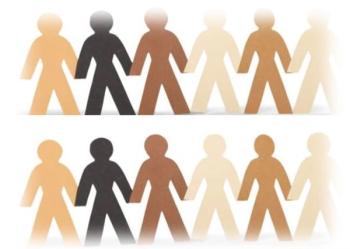
Parkinson's Drugs May Help Certain Stroke Patients
ST. LOUIS -- A form of stroke damage called neglect has responded with mixed results to dopamine agonists. Now researchers here think they know why some patients with neglect aren't helped at all by these drugs.
ST. LOUIS, April 11 -- A form of stroke damage called neglect has responded with mixed results to dopamine agonists. Now researchers here think they know why some patients with neglect aren't helped at all by these drugs.
They have shown clearly that neglect, a perceptual disorder, occurs in at least two forms, with similar effects but strikingly different causes. One of these forms, dubbed motor neglect, or directional hypokinesia, involves stroke damage to the same brain region as Parkinson's disease, the putamen, which would seem to open the way for dopamine agonist therapy.
Conversely, reported Ayelet Sapir, Ph.D., a postdoctoral researcher in neurology at Washington University here, and colleagues, in the April 11 issue of the Journal of Neuroscience, the damage from another form does not involve the putamen. So dopamine agonists would seem to be of no value.
Pinpointing the damage responsible for motor neglect to the same region, the ventral lateral putamen, Dr Sapir and colleagues said, opens the possibility that patients with the this form of neglect "may benefit from agents affecting dopaminergic transmission."
"Earlier attempts to treat stroke patients with neglect with dopamine-like compounds have produced mixed results," Dr. Sapir said in a statement. "It's possible, though, that those unfavorable outcomes resulted from an inability to identify the patients most likely to benefit from the intervention."
Motor neglect is part of the more general phenomenon of neglect, in which stroke patients have difficulty perceiving or reacting to stimuli on the side opposite to their stroke, the researchers said. Most cases of neglect result from a stroke on the right side of the brain, so that the left side is neglected.
But experiments here allowed Dr. Sapir and colleagues to differentiate patients with motor neglect from those with other forms of the condition. Then MRI scanning pinpointed the damage to the putamen.
The researchers tested 52 patients with left-side neglect after a right-side stroke, using a touch-screen video set-up. Diagrams appeared on either the left or the right side of the screen and patients were asked to respond by touching the figures with their right hands.
A patient with motor neglect would perceive the diagrams normally, but would respond slowly because of difficulty reaching to the left. On the other hand, a person with spatial neglect would also respond slowly, but because of inability to perceive the diagrams.
To disentangle the conditions, Dr. Sapid and colleagues moved the screen so that it sat in front of -- and to the right of - patients. Then even when a diagram appeared on the left side of the screen, the motion to touch it was rightward.
In that experiment, the researchers said, patients with spatial neglect remained at a loss, but the patients with motor neglect could now react almost normally.
Using that test, Dr. Sapir and colleagues said, nine of the 52 patients (17%) were shown to have motor neglect.
The researchers then scanned six of the motor neglect patients using MRI, along with 23 of the other stroke patients.
In all of the patients with motor neglect, the damage was centered on the putamen and claustrum, Dr. Sapir and colleagues said, and their lesions tended to cover much the same area.
Patients with other forms of neglect had a wider variety of lesions, she said, but the key difference was that 100% of the motor neglect patients had a ventral lateral putamen lesion, compared with none of the others.
"These results have obvious implications for designing novel rehabilitation strategies after neurological injuries," the researchers concluded.
Newsletter
Enhance your clinical practice with the Patient Care newsletter, offering the latest evidence-based guidelines, diagnostic insights, and treatment strategies for primary care physicians.















































































































































































































































































